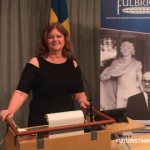When it comes to doing research in RA, it pays to have a good international and a multidisciplinary mix of partners. International collaborations allow for access to a wide variety of scientific expertise, extra resources, and, in clinical trials, a larger number of patients.
While international collaborations can be fraught with complexities, the European Union (EU) seems to have discovered how to facilitate the process by making it relatively easy to establish research networks through the European Commission (EC)—the legislative body of the EU.
“I think the EU is built on a philosophy of cooperation and the idea that there is strength in working together,” says Antonia Mochan, spokesperson for science and research at the EC. “Whether that makes things more or less difficult than in North America, I’m not able to judge. But it’s certainly a cornerstone of our work in science and many other policy areas.”
One such international network is the newly formed AutoCure, which has a mandate to study aspects of inflammatory rheumatic diseases. Indeed, AutoCure consists of 26 partners—19 major universities throughout Europe, six industrial partners (small to mid-size pharmaceutical companies), and the European League Against Rheumatism (EULAR). It was launched March 1, 2006, and has a five-year mandate.
According to Lars Klareskog, MD, PhD, coordinator of AutoCure, there are three main goals for the network. “One is to try to understand the causes of disease, two is to develop better prognostic markers, and three is to develop new therapies,” he says. Dr. Klareskog is also professor and head of rheumatology at the Karolinska Institute in Sweden.
At present, there are 22 research projects in the AutoCure network—a mix of new research and projects already underway at individual centers that now have been combined.
RA: Neglected No Longer
Until recently, rheumatology research in the EU “was a neglected area,” Dr. Klareskog told TR in a telephone interview. Each year, the EC calls for research proposals in specific science and medical areas.
“A number of us formulated the idea for this particular consortium,” he says. AutoCure was proposed, and won.
A total of 25 institutions and more than $14.5 million later (provided by the EC as a result of the competition), AutoCure was born. There is no other body in the world that facilitates the ability for researchers from a relatively large number of different countries to work together in such a way, says Dr. Klareskog. Additional funding also finds its way into AutoCure projects through government and rheumatology-related agencies from different countries, as well as some corporate funding. There are numerous research projects under AutoCure, ranging from basic science to large clinical trials to projects focused on data management and cost-efficiency.
